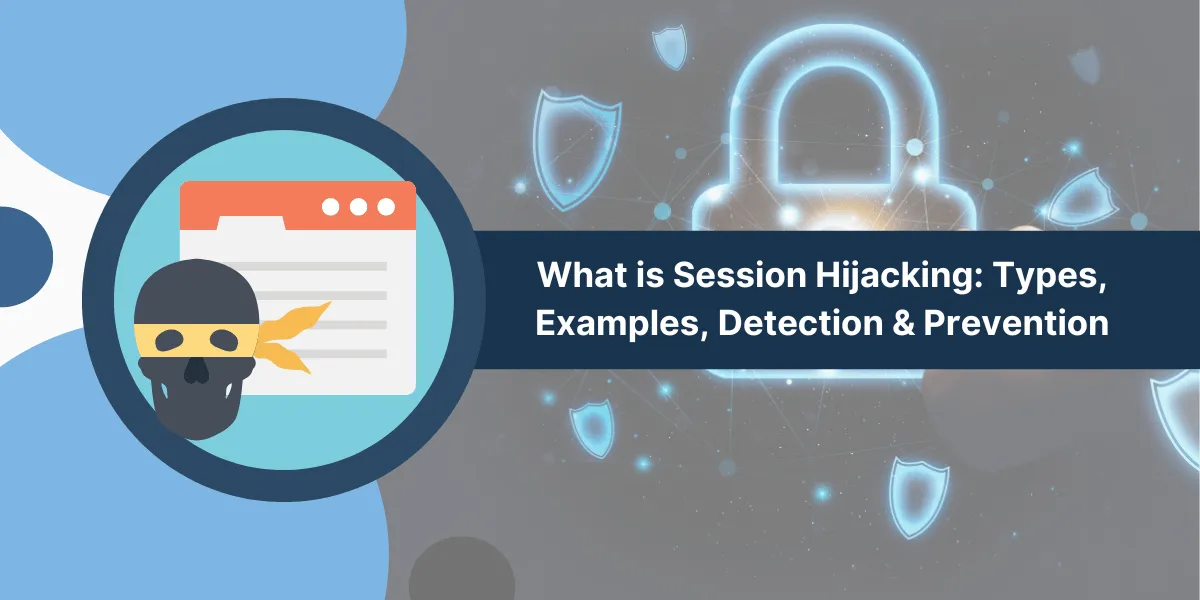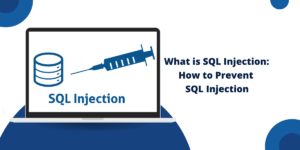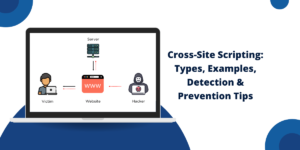What Does Session Hijacking Mean?
Session hijacking is a type of cyber-attack where a malicious actor takes over an existing user session to gain unauthorized access to a targeted system or network. The attacker exploits vulnerabilities in network protocols and web applications to hijack sessions and impersonate legitimate users.
Session hijacking enables attackers to bypass normal authentication procedures and gain elevated privileges to access sensitive data and system resources. This can allow them to steal personal and financial information, launch further attacks on internal networks, or cause service disruptions.
Key Takeaways
- Session hijacking is when an attacker takes over an existing user session to gain unauthorized system access.
- Exploiting weaknesses in network protocols and web apps allows attackers to steal session IDs and impersonate users.
- The main types of session hijacking are session prediction, session fixation, cross-site scripting, and man-in-the-middle attacks.
- Strong encryption, security headers, user input validation, and anomaly detection help prevent session hijacking.
- Logging out properly, using anti-virus software, patching systems, and employee training also reduces the risk of attacks.
How Session Hijacking Works?
Most applications and networks use session management to track user authentication and activity. A unique session ID is assigned when a user logs in, validating their identity for the duration of the session.
Attackers aim to steal or predict this session ID to impersonate the user and gain unauthorized access. As the application still recognizes the session as valid, the attacker can bypass normal login procedures.
Common steps in a session hijacking attack include:
- Monitoring and intercepting network traffic: The attacker intercepts traffic between the user and the application to capture session IDs. This may involve techniques like packet sniffing or man-in-the-middle attacks.
- Analyzing the traffic: The attacker inspects the intercepted data and extracts the user’s session ID. This may be present in cookies, URL parameters, or hidden form fields.
- Predicting valid session IDs: The attacker predicts or brute forces valid session IDs by exploiting weaknesses in how they are generated.
- Spoofing the user’s IP address: The attacker spoofs the victim’s IP address to appear as the legitimate user.
- Injecting the hijacked session ID: The attacker makes requests to the web application using the hijacked session ID to gain unauthorized access.
- Elevating privileges: Within the hijacked session, the attacker may attempt to escalate their privileges to access additional resources.
- Covering tracks: The attacker attempts to erase traces of the attack by deleting logs or hiding accessed files.
What are the Major Types of Session Hijacking Attacks
There are four main techniques used to execute a session hijacking attack:
- Session Prediction
- Session Fixation
- Cross-Site Scripting (XSS)
- Man-in-the-Middle Attack (MitM)
Session Prediction
The attacker tries to predict or guess the victim’s session token to gain unauthorized access. This exploits weaknesses in how session IDs are generated.
For example, if session IDs are generated sequentially, the attacker may be able to guess active IDs based on patterns. Brute forcing session IDs through automated tools is another prediction technique.
Session Fixation
In this attack, the attacker fixes or sets the victim’s session ID to a known value. When the victim logs in, this known ID allows the attacker easy access to the account.
The attacker may set the ID by exploiting XSS vulnerabilities or through social engineering methods. Once fixed, the attacker just needs to make requests using this ID to hijack the session.
Cross-Site Scripting (XSS)
XSS attacks inject malicious scripts into trusted web applications. The injected scripts can then steal session IDs stored in user cookies and transmit them to the attacker.
Stored and reflective XSS attacks are common methods used to steal session IDs and hijack user sessions. The session cookies are sent to the attacker’s server instead of the legitimate domain.
Man-in-the-Middle Attack (MitM)
With MitM attacks, the attacker positions themselves in a conversation between a user and an application to intercept traffic. This allows them to capture session IDs being transmitted and then use them to gain unauthorized access.
Common MitM attack vectors include ARP spoofing, SSL sniffing, DNS spoofing, and Wi-Fi eavesdropping. Once the MitM position is established, the attacker can steal session IDs through methods like packet analysis.
What are the Real-World Examples of Session Hijacking
Major companies and platforms have fallen victim to session hijacking attacks over the years:
- Facebook: In 2020, a security researcher demonstrated how XSS vulnerabilities could be leveraged to hijack Facebook user sessions. By exploiting stored XSS issues, the researcher was able to steal session cookies.
- PayPal: Researchers identified ways to predict PayPal session IDs based on patterns. By brutely forcing IDs in this manner, attackers could gain entry into random PayPal accounts.
- Gmail: Session vulnerabilities in Gmail enabled attackers to hijack active sessions and steal emails in 2009. Cross-site scripting was used to capture session IDs from user cookies.
- Microsoft Outlook Web Access: In 2010, Microsoft’s web email service was found vulnerable to session hijacking via man-in-the-middle attacks. Attackers could intercept encrypted traffic and steal session IDs.
- Joomla CMS: Joomla sites were vulnerable to session fixation, which allowed attackers to set known session IDs. This enabled easy account hijacking until the issue was patched in 2017.
How to Detect Session Hijacking Attacks
There are various signs that may indicate an attack:
- Irregular activity on user accounts, such as unauthorized money transfers or changed passwords.
- Increased traffic to the application from suspicious/unknown IP addresses.
- Strange activity from a known IP address, such as different geolocation.
- Multiple simultaneous logins using the same user credentials.
- Unexpected termination of valid user sessions.
- Unknown devices or operating systems accessing known accounts.
- Unrecognized session IDs in application logs and traffic.
- Signs of XSS exploitation or injection attempts in logs and firewalls.
- Presence of sniffing tools or spoofing attacks on the network.
How to Prevent Session Hijacking Attacks [7 Easy Ways]
Implementing security best practices across systems, networks, and applications is key for preventing session hijacking. Major mitigation strategies include:
- Encrypt Transmitted Data
- Utilize Security Headers
- Validate All User Input
- Issue Session Invalidation
- Employ Anomaly Detection
- Generate Complex Session IDs
- Secure Cookies
Encrypt Transmitted Data
Encrypting all traffic using protocols like TLS prevents man-in-the-middle attacks. Sensitive data and session IDs are secured when encryption is implemented end-to-end.
Utilize Security Headers
HTTP headers like HttpOnly prevent cross-site scripting by blocking client-side access to session IDs in cookies. Content-Security-Policy headers mitigate XSS issues as well.
Validate All User Input
Sanitizing and validating any data sent to an application destroys most XSS and code injection attempts used to steal session IDs.
Issue Session Invalidation
Force the expiration of active sessions after a defined period of inactivity. This limits the attack window. Automatically invalidating other user sessions once an account logs in from a new device also adds protection.
Employ Anomaly Detection
Monitor network traffic and user behavior to detect abnormalities so potential attacks can be flagged and prevented. Multi-factor authentication adds another layer of anomaly detection.
Generate Complex Session IDs
Creating long, complex, and unpredictable session IDs makes brute force and prediction extremely difficult for attackers. Avoid sequential identifiers.
Secure Cookies
Enable the ‘secure’ flag on cookies containing session IDs to prevent transmission over unencrypted HTTP connections. The ‘HttpOnly’ flag likewise prevents client-side access to cookie values.
Best Practices to Prevent Session Hijacking
In addition to technical safeguards, following security best practices minimizes the risk of successful session hijacking.
- Log Out Properly: Many session attacks occur due to unclosed browser sessions. Always fully log out and close the browser when done.
- Be Cautious on Public Networks: Avoid accessing sensitive accounts and data over public Wi-Fi. Use a VPN if necessary.
- Clear Cookies and Cache: Regularly clear cookies and cached data, especially before and after accessing sensitive accounts.
- Utilize Anti-Virus and Firewalls: Endpoint security solutions provide malware protection and help detect network anomalies.
- Keep Software Updated: Patch and update operating systems, browsers, and web applications to the latest versions to eliminate vulnerabilities.
- Employee Training: Educate employees on cyber threats like phishing, which can be used to steal login credentials as part of a session hijacking attack.
Final Words
Session hijacking is a serious threat to web application security. Attackers can gain access to victims’ accounts by stealing their session IDs. The main types are session prediction, session fixation, XSS, and MITM attacks. Common prevention methods include encrypting sessions, regenerating session IDs frequently, binding sessions to IP addresses, and using HTTPS.
Overall, session hijacking exploits web sessions and poses privacy and fraud risks. Developers must implement robust session management, and organizations need multilayered defenses. With vigilance and proper precautions, the impact of session hijacking can be minimized.
FAQs About Session Hijacking
What is session hijacking?
Session hijacking is when an attacker takes over an existing user session with a web application or network to gain unauthorized access using a stolen or guessed session ID.
What are the types of session hijacking?
Major techniques include session prediction, session fixation, cross-site scripting, and man-in-the-middle attacks, which all aim to steal or control a user’s session ID.
How do session hijacking attacks work?
Attackers monitor and intercept traffic to capture session IDs, analyze the traffic to extract the IDs, and then use the ID to impersonate the legitimate user and gain access.
What are examples of session hijacking?
Major platforms like Facebook, PayPal, Gmail, Microsoft Outlook, and Joomla CMS have been vulnerable to some form of session hijacking, like XSS and session fixation.
How can you detect session hijacking?
Unexpected account activity, unknown IP addresses, simultaneous logins, and terminated user sessions may indicate an attack. Traffic analysis and system logs can also reveal signs of session ID theft.
How can you prevent session hijacking?
Encryption, security headers, input validation, session invalidation, anomaly detection, complex IDs, and cookie security help stop session hijacking at a technical level. Security best practices like logging out fully and clearing cookies add protection.
What is session ID hijacking?
Session ID hijacking is when an attacker steals or guesses the unique session ID assigned to a user when logging into an application. This lets them impersonate the user and bypass normal login procedures.

Priya Mervana
 Verified Web Security Experts
Verified Web Security Experts
Priya Mervana is working at SSLInsights.com as a web security expert with over 10 years of experience writing about encryption, SSL certificates, and online privacy. She aims to make complex security topics easily understandable for everyday internet users.



